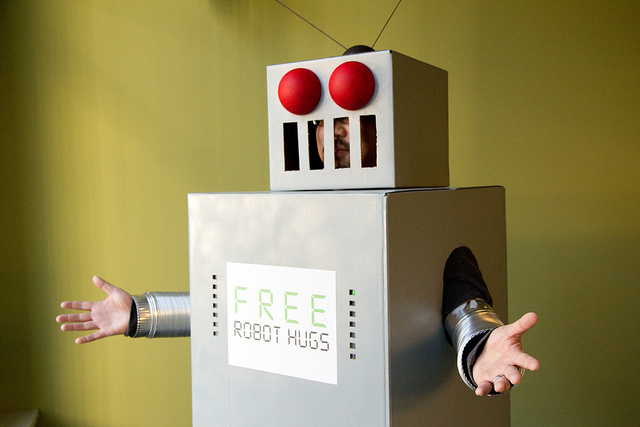This post has already been read 16445 times!
 In yesterday’s post I introduced the concept of “process robots”, and showed how they are already being deployed within supply networks to automatically do the work.
In yesterday’s post I introduced the concept of “process robots”, and showed how they are already being deployed within supply networks to automatically do the work.
For the most part these process robots have been hidden from view, lurking deep in the bowels of our supply networks solving a range of problems from simple matching of tagged services to some of the harder supply chain problems which may require some level of optimization or advanced mathematics. For example a process robot may be used to establish optimized min/max stocking levels for inventory based on desired customer service levels at retail. Depending on whether these items are fast or slow movers, promotional items, seasonal items etc. will determine the algorithms the robot uses to set the target inventory levels. Basically it is a data driven approach with business rules being applied to the data through the process robot.
Given the growing popularity and acceptance related to the Internet of Things, it is time to elevate these process robots so they can more easily interact with users working to solve today’s business problems. Think about a service like Angie’s List. A basic financial transaction involves a buyer, a seller, and a middle man. In this case a simple process robot can match a buyer with a set of sellers ranked by a survey of seller performance. Thus Angie’s List is a market maker of sorts.
Now let’s apply this same thought process to a full supply network. Today it is possible to design process robots which can match supply and demand across a global supply network. This is accomplished similar to Angie’s list where available services are tagged for search. The difference is that a properly designed supply network is a powerful B2B framework comprised of highly valued assets and capabilities.
The providers of these assets and capabilities are able to subscribe to the network in a way where process robots can expose their availability through a set of contracting rules and pricing constructs. The advanced cloud platform which powers the robots also provides the process infrastructure so that not only can supply and demand be matched, but a transactional business infrastructure is made available in real time in order to conduct business. This is truly a market maker revolution.
The innovation is that the platform is cloud based and layers across the existing ERP systems which have been deployed by various companies in the supply network. Otherwise it would be impossible access the assets or capabilities or even understand whether they were available for trade given the rigid structure of the existing ERP process flows. For the typical ERP system to develop the asset relationships and transactional process flows to support these types of opportunistic and adaptive trading relationships would take years rather than the real time environment supported by a many-to-many cloud platform.
And now think back to our original S&OP problem that drove the need to develop a set of process robots in the example above. Having process robots work on our behalf to solve the problem, rather than through an outsourced contractor, makes the data available to share across the network.
In my next post, I’ll spend more time discussing the Internet of Things and how it relates to process robots and supply chains.
- What Constitutes a True Supply Chain Network? - April 8, 2024
- Where AI Actually Matters in the Supply Chain - September 12, 2023
- Enhancing Blockchain for Supply Chain - October 17, 2017
